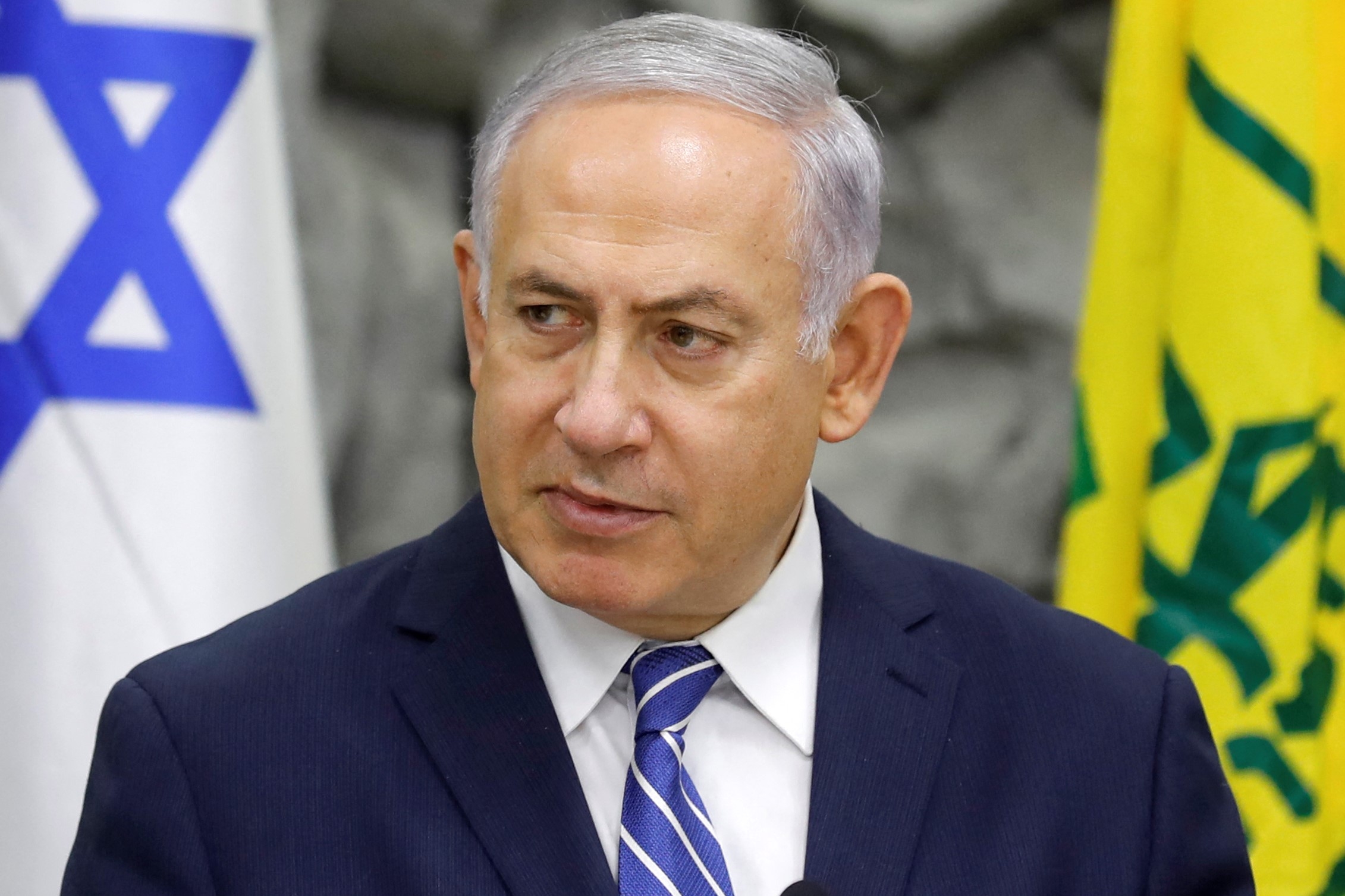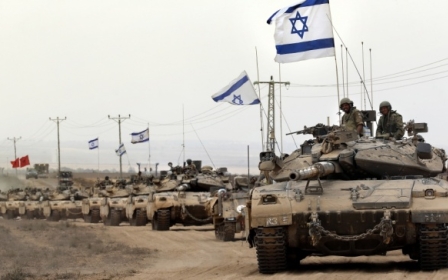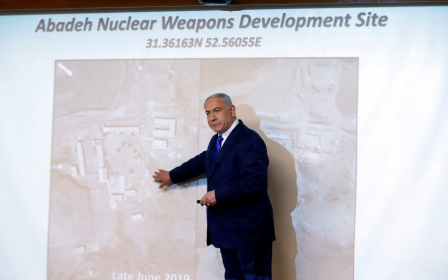What is Israel building at its Dimona nuclear site?

An international NGO devoted to halting the proliferation of nuclear weapons recently released satellite imagery showing that Israel, for the first time in decades, was engaged in new construction at its Dimona nuclear site. The reactor there, which first became active in the mid-1960s, manufactures plutonium as fuel for Israel’s reputed stockpile of 80 nuclear warheads.
This excavation has piqued the curiosity of nuclear experts and intelligence agencies around the world. Since the Dimona reactor has long since passed its projected lifespan, some have speculated that Israel may be building a new plutonium reactor.
This seems unlikely, as this element is long lasting, and Israel has already produced enough for current or future needs. Some have speculated that the existing reactor is either substantially shut down or being decommissioned.
The ultimate irony of the Dimona project is that no one questions Israel's right to make nuclear weapons or to improve the lethality of its arsenal
If Israel does not need a new reactor to replace the old one, then what else might it be building there? In a recent interview with the Associated Press, Daryl Kimball, executive director of the Washington-based Arms Control Association, pointed to another critical element in nuclear warheads: tritium. It is a hydrogen isotope used to increase the yield of nuclear warheads. It also makes the explosive reaction more efficient, so less fuel (in Israel’s case, plutonium) is needed.
Tritium has allowed for advances in weapons design, including smaller devices whose explosive power is magnified. It is also used in neutron bombs, which are designed to kill humans while having a reduced blast area. Kimball told the AP that Israel “may want to produce more tritium, a relatively faster-decaying radioactive byproduct used to boost the explosive yield of some nuclear warheads”.
Tritium, like plutonium and other substances used to produce nuclear weapons, is manufactured in a nuclear reactor. It can be produced by irradiating lithium metal. The isotope is less stable than plutonium, meaning it requires replenishing more frequently for use in a nuclear arsenal.
If, as leading nuclear expert Avner Cohen has speculated, the old Dimona reactor is to be retired, Israel would need a new source for the production of tritium. Perhaps a reactor is being specifically built for that purpose.
Construction appears to have begun, according to an analysis of satellite photos, sometime in late 2018 or early 2019. This means that work has likely been underway for around two years. The current images mainly indicate excavation, but no buildings yet being constructed.
Why is the process moving so slowly? It could indicate indecision among policymakers about when and whether to shut down the old reactor, or budgetary constraints preventing a faster pace of construction.
The real nuclear danger
But why has the imagery become public only now, after two years of construction? Given the looming conflict between Israel and US President Joe Biden over the revival of the Iran nuclear negotiations, it’s possible that the US administration wants to remind the world where the real nuclear danger lies - and it’s not in Iran.
If the construction is related to the production of tritium, this would suggest that Israel is not building a new class of nuclear arms, such as the hypersonic weapons of which Russian President Vladimir Putin has boasted - at least not at Dimona. Rather, Israel is likely refining the potency of its existing arsenal.
Satellite images shows significant new construction at the Dimona site https://t.co/Mhyh801Uzp
— IPFM (@fissilematerial) February 18, 2021
The ultimate irony of the Dimona project is that no one questions Israel’s right to make nuclear weapons or to improve the lethality of its arsenal. Digging a hole the size of a soccer field to build God-knows-what? Go right ahead. Yet, should a single particle of uranium fall to the ground in a place where it should not be in Iran, the whole international community begins tut-tutting that Tehran is a few weeks from nuclear breakout and imminent catastrophe.
Why the double standard? Why does the world believe that Israel has the right to such an immense arsenal, and that it will maintain it responsibly, while Iran has no right to even a single weapon - and that should the latter create one, it would blow up the world? What has Israel ever done to deserve such credibility, and what has Iran ever done that is so much more heinous as to deserve this level of obloquy?
Keeping enemies in check
In a Facebook exchange with Cohen, he called Benjamin Netanyahu Israel’s most “nuclear-keen” prime minister since David Ben-Gurion, who founded the country’s nuclear programme. Netanyahu has taken far more interest in the nuclear project and made numerous speeches, both at Dimona and at Ben Gurion’s graveside nearby at Sde Boker, threatening Iran with nuclear destruction.
That doesn’t necessarily mean that Netanyahu is any more likely to use such weapons than previous prime ministers. It means that he sees a critical need for Israel to have credible nuclear deterrence to keep its enemies in check. This is a key element of Israel’s geopolitical strategy, a means of projecting power and guaranteeing the nation’s regional dominance.
It fends off threats by hostile forces in Iran, Syria and Iraq. In the past, former Israeli Prime Minister Menachem Begin ordered an attack on an Iraqi nuclear reactor, and former Israeli Prime Minister Ehud Olmert ordered an attack on a Syrian reactor being built in its eastern desert.
Netanyahu’s obsession with Iran’s nuclear programme might derive from his being loath to be the first Israeli leader to permit an Arab enemy to join the nuclear club.
Over the past decade, the US and Israel have played good cop-bad cop roles regarding the Iranian nuclear threat. US presidents have used a combination of covert sabotage and public diplomacy to advance a policy of restraining Iran, while Israel has, at times, advocated an outright military attack. Both collaborated on the covert Stuxnet malware that destroyed uranium centrifuges.
But the US has never been willing to join in an attack on Iran, despite Netanyahu’s lobbying. Will the Israeli leader show restraint, or will he test Biden’s resolve and Iran’s commitment to negotiations by continuing to assassinate nuclear scientists and otherwise undermine a political-diplomatic approach to resolving the crisis?
Biden has learned from the past experiences of former President Barack Obama not to trust Netanyahu. It is an unenviable position to have to distrust both one’s enemy (Iran) and one’s ally.
The views expressed in this article belong to the author and do not necessarily reflect the editorial policy of Middle East Eye.
Middle East Eye propose une couverture et une analyse indépendantes et incomparables du Moyen-Orient, de l’Afrique du Nord et d’autres régions du monde. Pour en savoir plus sur la reprise de ce contenu et les frais qui s’appliquent, veuillez remplir ce formulaire [en anglais]. Pour en savoir plus sur MEE, cliquez ici [en anglais].






